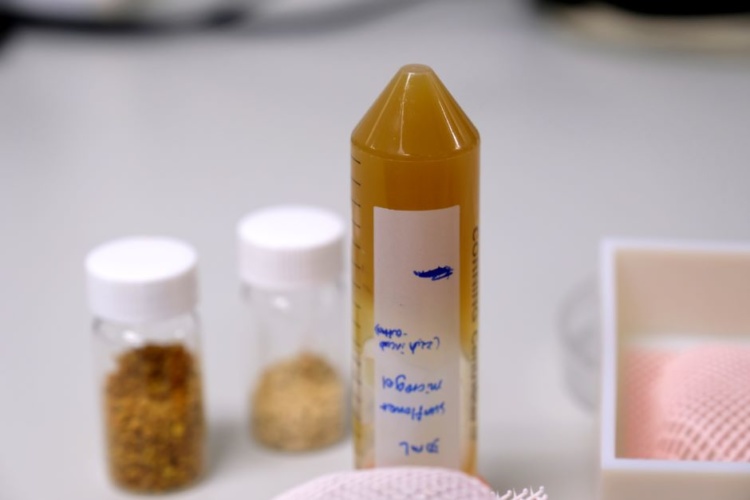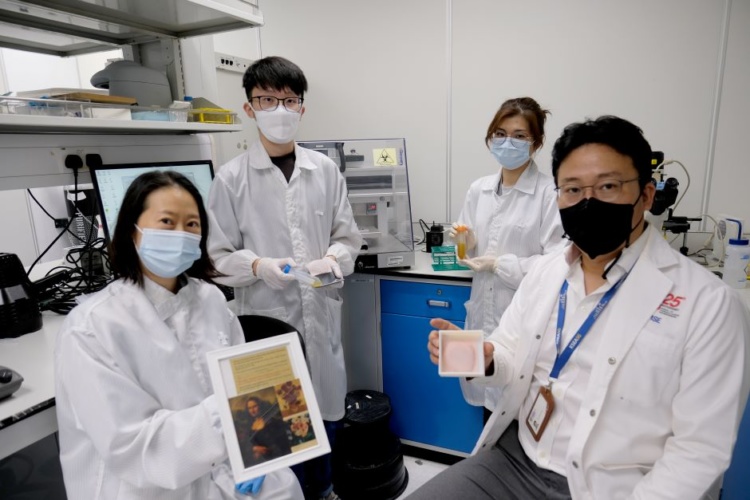
Developed by scientists at NTU Singapore, the pollen-derived ink is reportedly able to hold its shape when deposited onto a surface, making it a viable alternative to current inks used for bioprinting. Such inks are usually soft and delicate, making it a challenge to retain the final product’s desired 3D shape and structure as the bioprinter deposits the ink in layers. The team’s results are described in Advanced Functional Materials.
In a statement, co-lead author Professor Cho Nam-Joon of the NTU School of Materials Sciences and Engineering said: “Through tuning the mechanical properties of sunflower pollen, we developed a pollen-based hybrid ink that can be used to print structures with good structural integrity. Utilising pollen for 3D printing is a significant achievement as the process of making the pollen-based ink is sustainable and affordable. Given that there are numerous types of pollen species with distinct sizes, shapes, and surface properties, pollen microgel suspensions could potentially be used to create a new class of eco-friendly 3D printing materials.”
New pollen sponge could tackle water contaminants
The development process of the pollen-based hybrid ink starts with incubating sunflower pollen in an alkaline solution for six hours to form pollen microgel particles. The pollen microgel is then mixed with hydrogels such as alginate or hyaluronic acid to form the final pollen-hydrogel hybrid ink.
As a proof-of-concept, the scientists printed a five-layer tissue engineering scaffold, useful for culturing cells, in 12 minutes. Collagen was then added to the scaffold to provide anchor points that cells can adhere to and grow.
The scientists then seeded human cells on the scaffold and found it to have a high cell-seeding efficiency of 96 per cent to 97 per cent, which is comparable to the performance of inverted colloidal crystal (ICC) hydrogels that are widely utilised as 3D cell culture platforms but are time-consuming and laborious to fabricate.
The NTU team also tested the viability of the 3D scaffold as a stimulus-responsive drug delivery system. When a fluorescent red dye was dripped onto the scaffold, the pollen microgel particles gradually released the dye into the scaffold. The amount and rate of release increased with the addition of an acid, demonstrating the potential for the pollen scaffold to be used as a drug delivery system with controlled release.

The scientists also found that that the soft and flexible pollen microgel particles could potentially serve as a recyclable support matrix for use in freeform 3D printing, in which soft ink is deposited.
The most widely used bioprinting method is currently extrusion-based bioprinting. One of the challenges of this method is the difficulty in retaining the 3D structures and shapes of delicate materials like hydrogels, cells, and biopolymers without additional support. A supporting matrix, within which the soft ink is deposited during the printing process, is typically used but creates waste since the supporting matrix becomes unusable after printing.
Study co-lead author Assistant Professor Song Juha from the NTU School of Chemical and Biomedical Engineering said: “Previous research efforts were focused on developing special bioinks for efficient deposition and printability through mixing hydrogels with fibres or particles. The main drawback of such hydrogel composite inks is nozzle clogging, which is a more significant issue in inks with a higher content of such fibres or particles. The pollen-based hybrid ink we have developed, in contrast, is mechanically strong enough to retain its structure without jamming the printer.”
The team is now looking to collaborate with industry to refine their 3D printing method and commercialise their innovation.




Nanogenerator consumes CO2 to generate electricity
Whoopee, they've solved how to keep a light on but not a lot else.